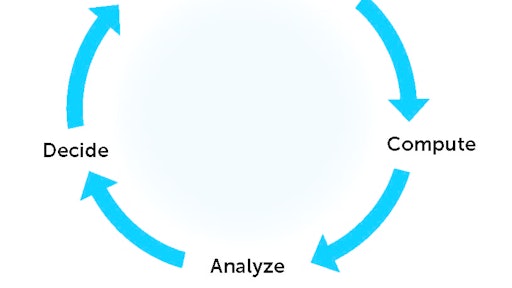
Estimating is step one to making money performing lawn care or landscaping services. Thus, your estimates should reflect your true costs of performing the service—including materials, labor, equipment, subcontractors and overhead—along with your desired profit margin. Also, your estimates will likely have to take into consideration the competitive nature of the market you're in.
That said, you really have to know your numbers, your market, and the specific job you are bidding on. Then, you have to develop a simple, accurate, consistent estimating process so you can keep your focus on building your business.
"Let's do some quick math," says consultant Phil Harwood of Pro-Motion Consulting. "If a landscape company owner spends two hours estimating a property and another two hours putting the bid together, that's four hours." Since the value of a company owner's time is around $300 an hour, according to Harwood, it would cost $1,200 to bid on this property.
As you can see, it makes sense for a landscape company owner to simplify and expedite the estimating process as much as possible—without degrading the accuracy of his estimates. A simple software program like Microsoft Excel can help. Harwood says many successful contractors have created "estimating calculators" using Excel. These calculators help create a consistent estimating process that is also simple, efficient, and less costly than some other forms of estimating.
Three common estimating styles
Before we go any further, let's take a quick look at three common styles of estimating used by landscape contractors today. Each has its own set of pluses and minuses.
Eyeball it. Many veteran contractors say, "I've been doing this so long that I can look at a property and give you an estimate." For some, there is a lot of truth to that statement. But it's very hard to teach an employee how to do this effectively. Thus, the owner is forever stuck in the role of estimator, cutting back on the time he could spend working on the business and creating new opportunities.
Walk it, jot it. A more scientific approach is to walk a property and measure it, often with a measuring wheel or perhaps some kind of mobile app, given today's technology. In any event, the contractor jots down some measurements and other site notes, retreats to his truck or office, grabs his calculator, and starts crunching some numbers. While this approach is a step in the right direction, it is also hard to teach to inexperienced employees.
Business software. Good business management software becomes more necessary as a landscape company grows. It can prove to be well worth the investment, many contractors will attest, but can also present a few challenges of its own. First, there's the upfront investment. Second, quite a bit of user training will likely be necessary. Third, software is often rigid, meaning that you may have to conform your systems to the software, as opposed to vice versa. And regardless, you still have to measure the properties—typically in the same manner as the walk-it/jot-it contractors do. (NOTE: There are online tools available today that allow you to measure properties using aerial mapping systems right from your computer. But in many instances you still have to visit a property to observe site conditions, confer with the prospective client, etc.)
What you really need to know
So which style is right for you? The eyeball method typically has a snowball's chance for smaller, one- or two-crew companies where the owner is doing the estimating, overhead is low, and competition might not be as ferocious. Same goes for the walk-it/jot-it method. As for using business management software, larger companies with at least a few crews are probably the best candidates.
Regardless of which estimating style you are using, though, you must have a handle on your numbers so you can base your estimates on those numbers. Here's a quick summary of what you need to know in order to create a consistent and reliable estimating system:
- Material costs
- Labor rates with labor burden (payroll taxes, insurance, etc.)
- How much it costs you to operate each piece of equipment per hour
- How long it takes your employees to perform specific landscaping tasks
- Overhead (by division if applicable)
- Desired profit margin (by division if applicable)
- A thorough understanding of the job you're bidding on so you can correctly allocate the above costs to an estimate
Rich Wilbert is the landscape management division manager for Surrounds Landscaping in Sterling, VA. Years ago he actually owned his own design/build company. Wilbert has had experience using a couple of popular estimating methods, including MORS (marking up each of your direct costs by certain percentages in order to recover overhead and generate profit), and Unit Pricing (where you say, "I'm going to charge X for this plant and X for mowing this much turf," etc.) Both methods have seemed to work just fine for Wilbert over the years.
Surrounds Landscaping uses a software program called Asset from Include Software. There's an inventory management feature where you can enter all of the common materials you use on jobs—from plants to mulch to pavers—and then assign values to them based on their cost to you and any markups you need in order to recover overhead and generate profit. This "catalog manager" feature lets you seamlessly add materials and their values directly to estimates.
The thing to remember, though, is that you still have to assemble your list of materials and input the values into the software program. This begs the question that consultant Phil Harwood broached early on in this story: Could you just use a program like Microsoft Excel to do this?
"There are definitely some benefits to using Excel from both a management and estimating perspective," Harwood says. Those benefits are:
- Store all information related to a specific property in one computerized location
- Easily integrates into sales and administrative processes
- Negotiation on a job is easier because the information is all stored in the Excel document, and because an Excel spreadsheet is formula-driven, you can adjust on the fly
- On the topic of formulas, you can protect them so they can't be altered, greatly reducing the "human error" aspect that's common in estimating
- Estimating is easier to teach to employees because you're using a templated program with pre-determined calculators that is generally easy to use
"When building estimating systems, we can over-complicate things or we can simplify them," Harwood reminds. The main thing is that you want your estimating system to be reliable, simple, efficient and fast.
"Remember that speed is important," Harwood says. "Estimating and bidding costs money. The faster you can perform your estimating and bidding activities, without losing accuracy, the lower your costs will be—adding more money directly to your bottom line and freeing you up to sell more work. If you have a good estimating system and you trust it, you should be able to produce a typical proposal in about 10 minutes. If it's taking you longer than that, something's probably wrong."
"Many successful contractors each have their own estimating guru," Wilbert adds, in reference to consultants like Frank Ross, Phil Harwood, Charles Vander Kooi, Tony Bass or Jim Huston. "Similarly, many successful contractors each have their own estimating systems. Some have dedicated software, and some just use Excel. There are great success stories on both sides, so you really can't say one method is absolutely better than the other. The main thing is that these contractors know their numbers and how to apply them to their estimates and bids."





























